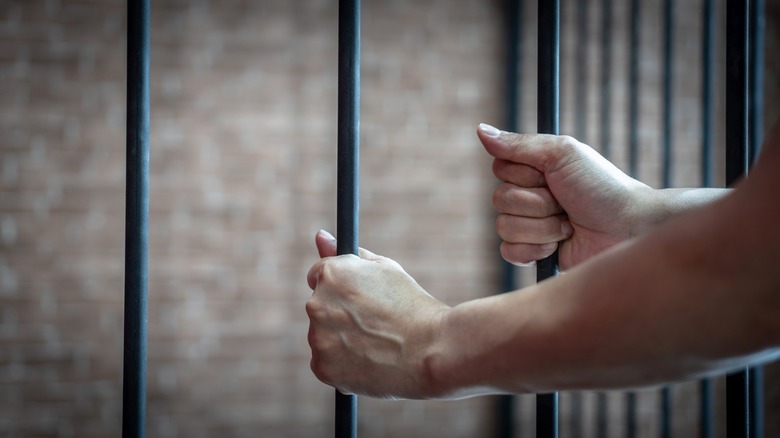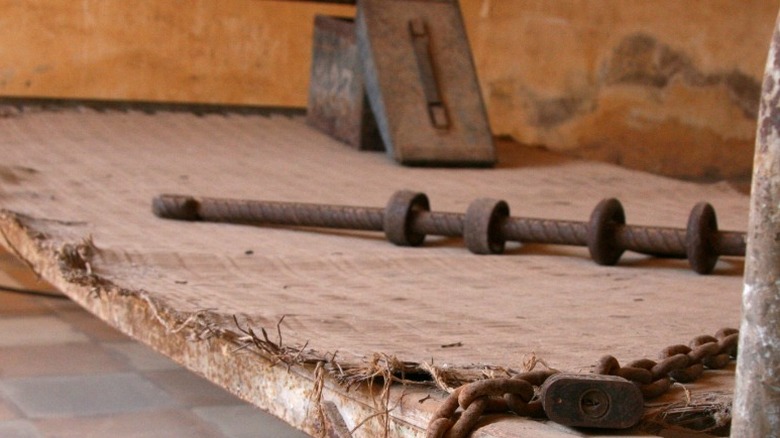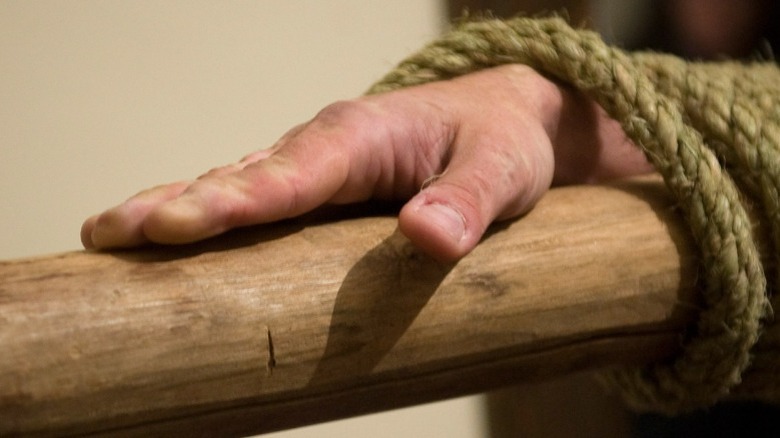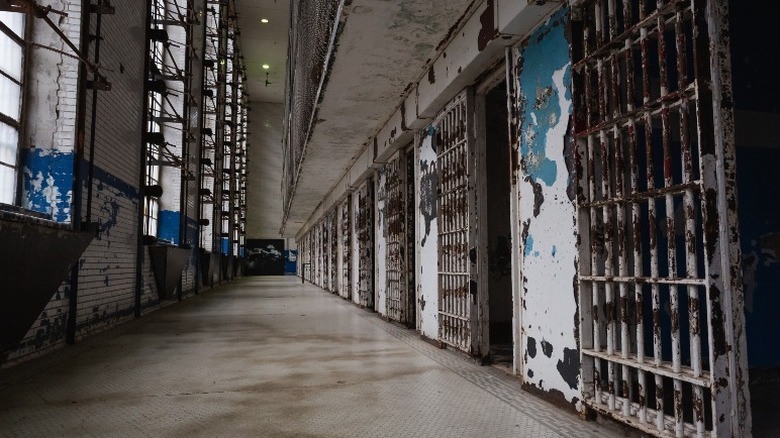How The Kansas City Butcher Was Finally Caught
The following article includes descriptions of assault and torture.
Hyde Park, Missouri, sits just north of the Country Club Plaza in Kansas City. Taking a walk or ride through this early 20th century neighborhood is almost like taking a trip back in time. According to HydeParkKC.org, families have lived there for generations in the tree-lined streets populated with old Craftsmen, Victorian, and Colonial Revival houses.
The house that once stood at 4315 Charlotte Street was an unassuming Kansas City Shirtwaist style structure, with a peaked front porch. These residents of this close-knit neighborhood knew the man that lived there in the 1980s fairly well. The Chicago Tribune reports that he regularly attended block parties, began the neighborhood watch program, led an effort into exploring neighborhood rehab studies, and even represented Hyde Park's residents on local public television fundraisers. He also ran a booth at the legendary Westport Flea Market called "Bob's Bizarre Bazaar," where he peddled unique items ranging from occult artifacts to shrunken heads (per Investigation Discovery).
This ideal neighbor was named Robert Berdella. You can imagine their surprise one April morning, in 1988, when a man wearing only a dog collar leaped from a second-story window of Berdella's home and ran toward another house in the neighborhood. Kansas City didn't know it at the time, but this man had just escaped with his life from Berdella, who would soon be known as the Kansas City Butcher.
The victim was tortured for days
The naked man, found with swollen eyes and gruesome red gashes on his wrists and ankles, was 22-year-old Christopher Bryson, as the Chicago Tribune reports. Robert Berdella had bludgeoned and raped Bryson, and tied him to a bed in an upstairs bedroom, as reported by The Pitch KC. Bryson endured various forms of torture over the next several days — Berdella had even injected his throat with drain cleaner.
According to Medium, Bryson was able to gain Berdella's trust after the first few days of torture, enough to be taken upstairs and bound to the bed. There, Bryson was permitted to watch TV with his hands bound in front of him while Berdella was out of the house.
On April 2, 1988, Berdella went out, allowing Bryson to escape. Using a book of matches that Berdella had left within arm's reach, Bryson burned through his rope restraints. Not wasting any time, he then leaped from the window of the room he was held captive in. While he broke a bone in his foot during his fall, Bryson was still able to make it to Berdella's neighbor's house and finally to law enforcement.
A house full of horrors
According to the Huffington Post, police charged Robert Berdella with "sodomy, felonious restraint, and first-degree assault." But when they searched his home, they were shocked to find a house of horrors that could have been in the movie "Hostel." They found his "torture dungeon," which held numerous restraints, torture devices, and other instruments of terror that he used on those he managed to lure into his house.
Over 200 polaroid photos were found in the house, depicting the various acts of violence that Berdella subjected his captives to. Berdella even kept a detailed record of his brutality in what was described as "torture logs." These diaries outlined the torture and execution of at least six victims. Had Bryson not made his escape, it's easy to believe that he would have been the seventh.
Investigators had enough to get Berdella charged with six murders (per All That's Interesting). He took a plea agreement with prosecutors, in which he would be spared the death penalty and sentenced to life in prison without the possibility of parole. In exchange for this deal, he also had to give the details of each murder.
Berdella didn't live long in prison
The aftermath of Robert Berdella's arrest was tumultuous for his neighbors in Hyde Park. Aside from the noise and the constant traffic from law enforcement agents that were busy excavating Berdella's backyard in a search for his victims' remains, they were also being pestered by throngs of curiosity seekers. ”It has destroyed the neighborhood in terms of how we feel about where we live. We're all feeling a lot of pain that he did this to us,” a neighbor of Berdella's told the Chicago Tribune, in July 1988.
Berdella died in prison of a heart attack in 1992. As for his residence on Charlotte, it, too, is no more. Kansas City resident Del Dunmire bought the house and had it demolished in 1993. When the workers began dismantling the house, a Kansas City Star reporter asked one of the workmen if he was afraid of what he might uncover. He answered, "It's a strange feeling. You kind of wonder what you might find when you take a wall panel out."
Nothing was discovered during the demolition and, where Berdella's house of horrors once stood, remains a vacant lot to this day.
If you or anyone you know has been a victim of sexual assault, help is available. Visit the Rape, Abuse & Incest National Network website or contact RAINN's National Helpline at 1-800-656-HOPE (4673).



